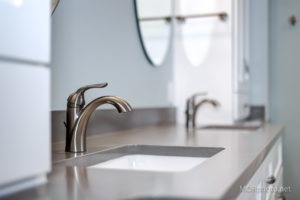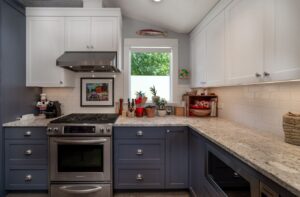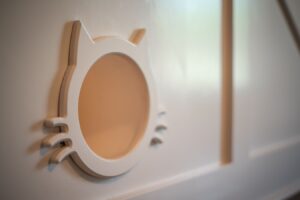There is an abundance of countertop materials to choose from when renovating your kitchen – marble, quartz, quartzite, soapstone, butcher block, concrete, granite, limestone, laminate, recycled glass, stainless steel, terrazzo, ceramic tile, and even paper composite. But which material is right for you and your lifestyle?
Let’s take a look at the pros and cons of some of the most popular materials:
Marble
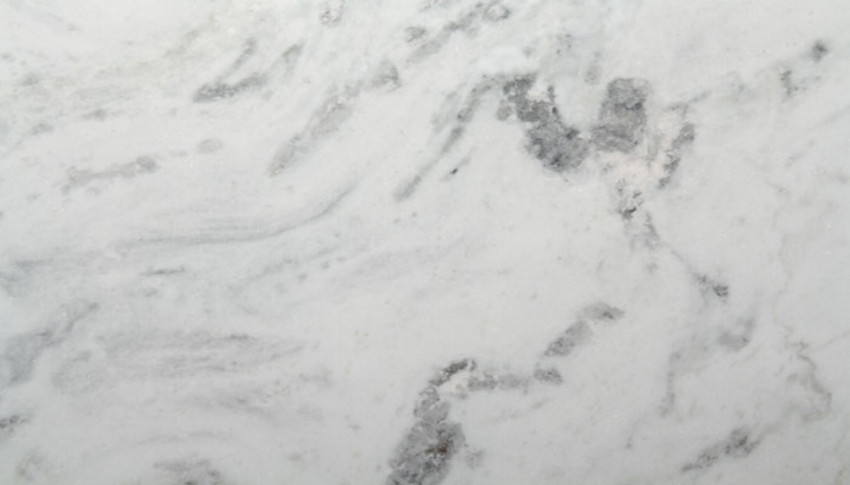
Pros: The look (obviously); marble is as classy as it gets; it’s mostly heat durable; and it’s timeless so maintenance aside, you won’t want to change it.
Cons: Marble is a porous surface so it will absorb liquids & stain & etch, meaning it needs to be resealed every year or two. It gets nicked, cut, and scratched easily. Plus, it’s the one of the more expensive materials you can pick for your countertops.
If you watch home improvement shows at all, you’ve probably heard the phrase “carrara marble” thrown around a lot. Carrara marble is a variety of marble that is one of the highest qualities of marble, and it comes in the typical white and blue-gray color people picture when they think of marble.
Marble is absolutely beautiful, but it is also extremely expensive. If you are going for a kitchen that is luxurious, timeless, and more show-than-tell, marble might be the right countertop for you.
Engineered Quartz
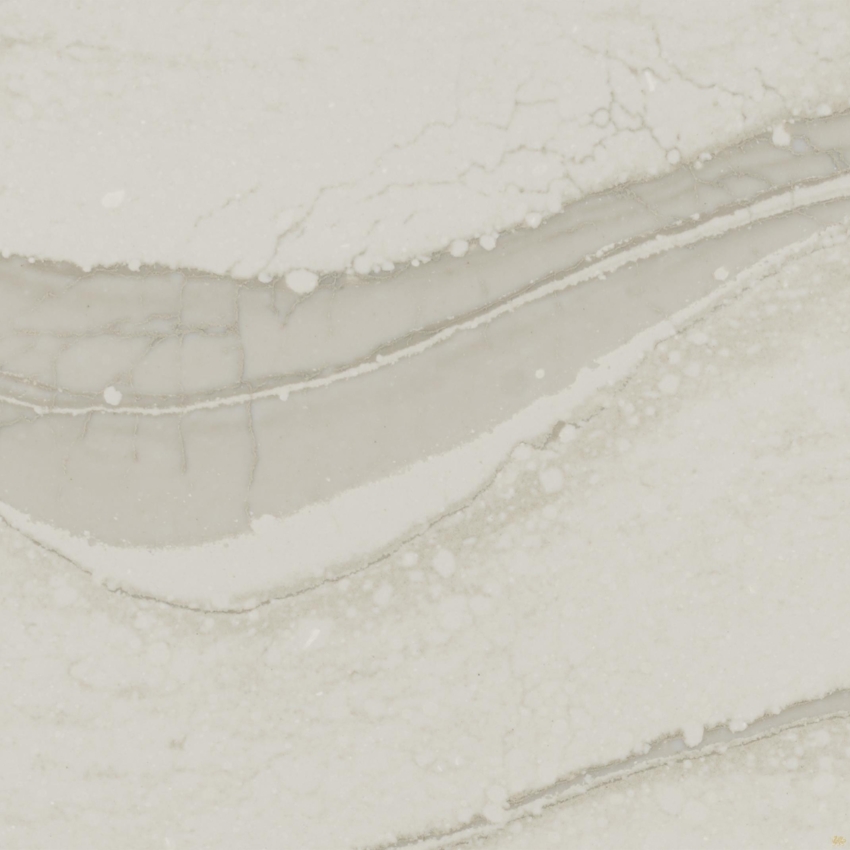
Pros: Quartz is the man-made version of marble, so you get the beauty of the real stuff, combined with great engineering to get rid of the flaws, making quartz stain-, scratch-, heat-, acid-, and impact-resistant. It’s also a non-porous surface, so you don’t ever have to reseal it – you gotta love low maintenance. Plus, it comes in a variety of finishes (polished, matte, or concrete), and you can even find quartz that looks like granite, if that is your preference.
Cons: Like the real thing, quartz can occasionally get chipped, particularly on the corners and edges, and the repair work requires a professional.
We here at Square Deal Construction love quartz! If you like the look of marble, but you have a budget, and you get messy in your kitchen on a daily basis, quartz is probably the countertop for you. To see what your kitchen would look like with quartz, check out Cambria’s online Kitchen Visualizer, or you can use the Cambria AR app on your phone.
Granite
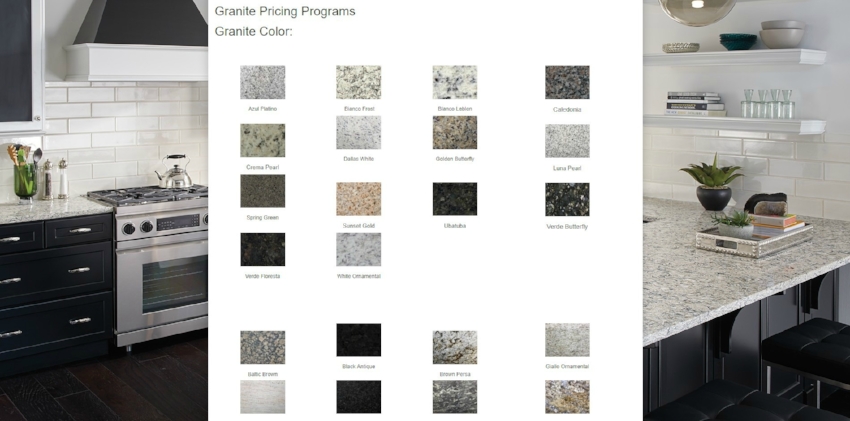
Pros: Granite comes in a huge variety of color options and variations, and it can be polished (shiny) or honed (matte). Once it’s been sealed, granite is non-porous so it’s easy to clean. It’s also mostly resistant to heat, cuts, and scratches.
Cons: Needs to be sealed! Seriously, granite absorbs absolutely everything if it’s not professionally and properly sealed, and periodically resealed. Another con is how easy it is for the corners to get chipped.
Because they are a natural stone, granite countertops are one-of-a-kind. If you don’t mind a little more maintenance for your counters, and you are possibly interested in more rare colors, granite just might be what you’re looking for. You can see what different granite colors look like in a kitchen with the Keystone Kitchen Visualizer.
Concrete

Pros: Because concrete is so sturdy, it’s almost completely stain, heat, and water resistant, as long as it’s been properly sealed. It’s also super easy to customize – everything from the thickness to the edges to the color to the finish can be customized.
Cons: Concrete will patina (darken in color) over time and it does require periodic maintenance such as resealing to keep it in tip top shape. It’s also be difficult to find someone that specializes in concrete countertops.
If you’re going for a more unique, very stylized aesthetic in your kitchen, concrete might be just the countertop you need.
Recycled Glass
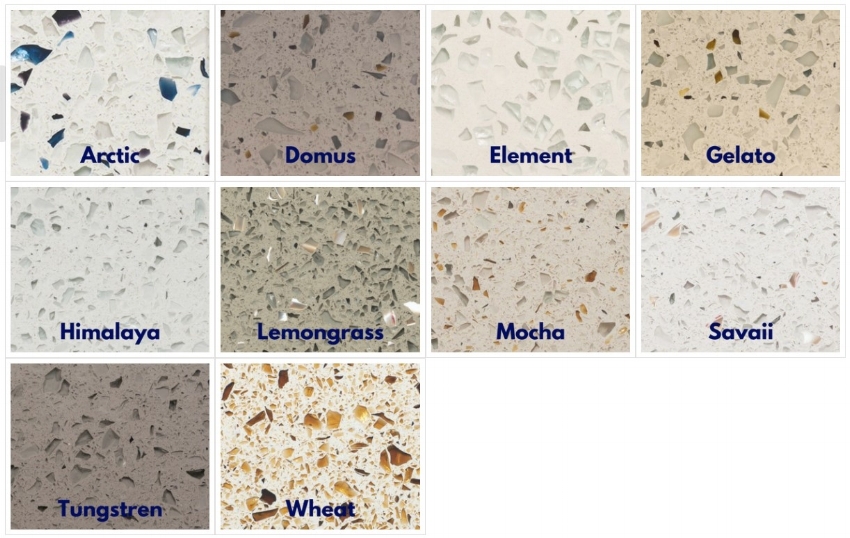
Pros: Recycled glass countertops are super unique and fun. They have large pieces of glass to significantly more finely ground pieces. It’s also mostly resistant to cuts, scratches, and heat, although that varies by manufacturer.
Cons: The two biggest cons for recycled glass surfaces is that they can stain, and how wide of a cost range there is for the materials.
If you want a more colorful, eco-friendly kitchen, recycled glass is a good way to go, although you should definitely do more research into which manufacturer will best suit your needs.
Butcher Block

Pros: Butcher block brings some often much-needed warmth and character to a kitchen, and it is a great way to have multi-use surfaces. They are also extremely sanitary when they’ve been properly sealed.
Cons: Butcher block needs to be sealed and oiled regularly to stay in good condition. It’s not a great material to put around a sink because of how wet the sink area usually is, but it’s a good option for a counter space near the oven or as an island top. The wood is also susceptible to scratches and dents, just like a regular cutting board.
If you like a more natural look, and you need multi-functional space, you should consider adding some butcher block to your kitchen.
You can find more information on countertop materials at these locations: Studio McGee‘s rundown of countertop surfaces pros and cons; Consumer Reports Best Countertops for Busy Kitchens report; Stock Cabinet Express’s comparison of granite versus quartz; the Countertop Preview consumer toolbox Countertop Comparison Chart; Jenna Burger‘s helpful rundown of materials; Zillow‘s guide; and Lindsay Stephenson’s revisit of quartz countertops.


